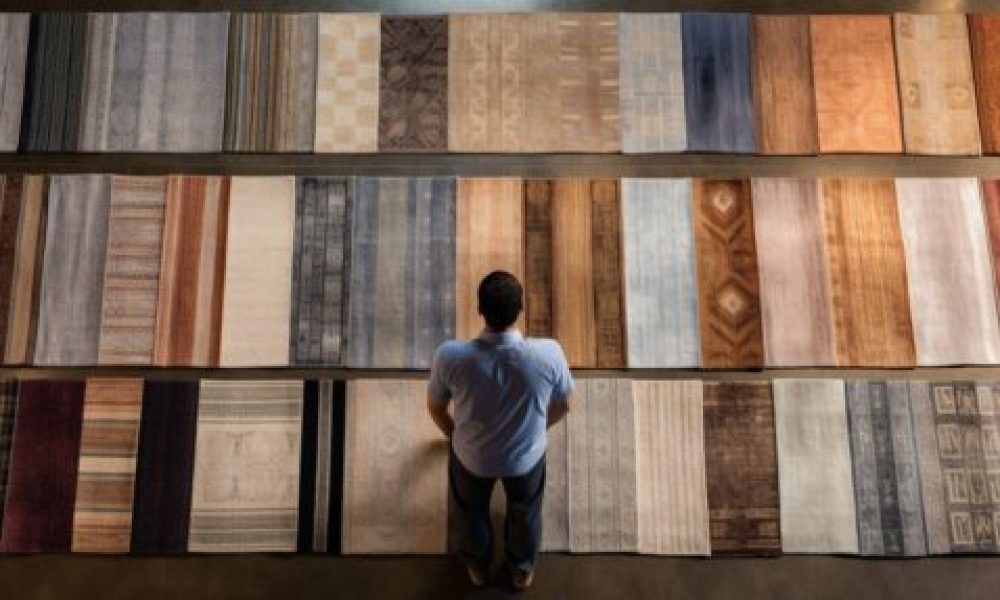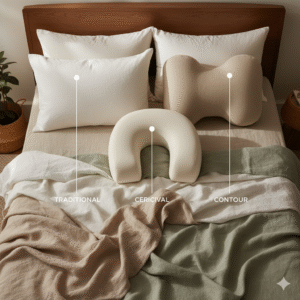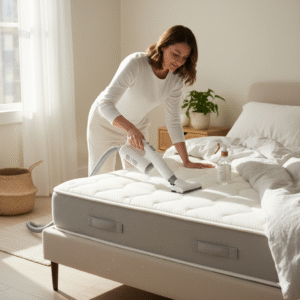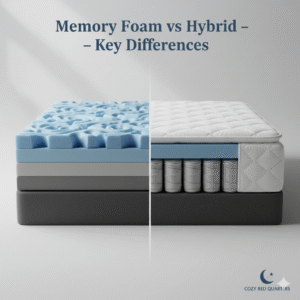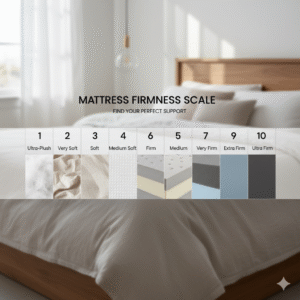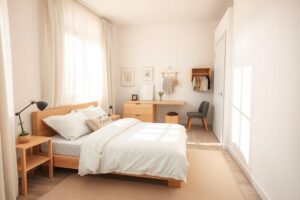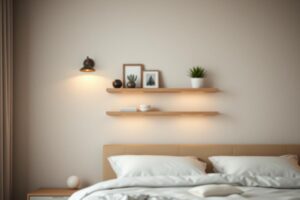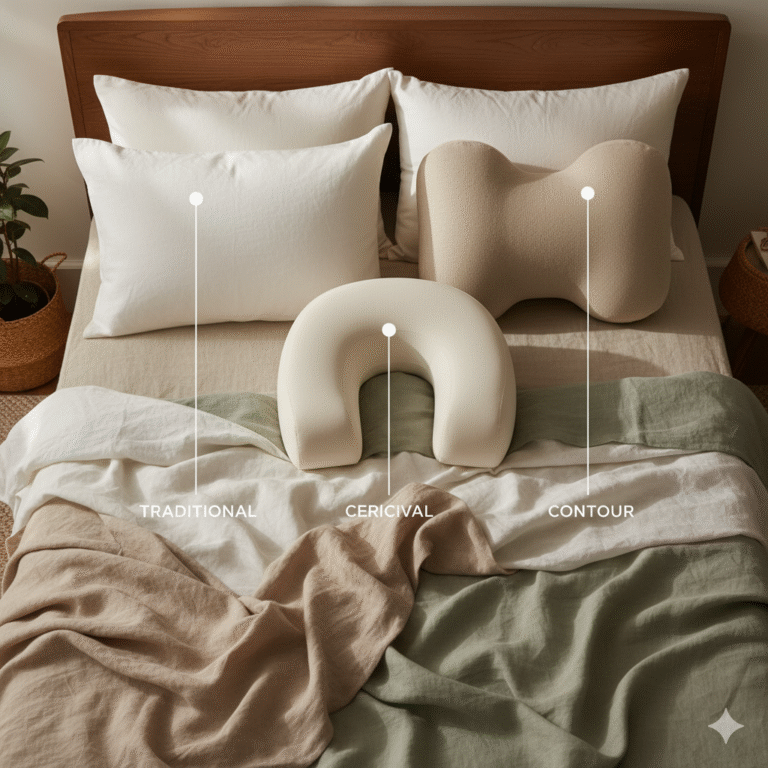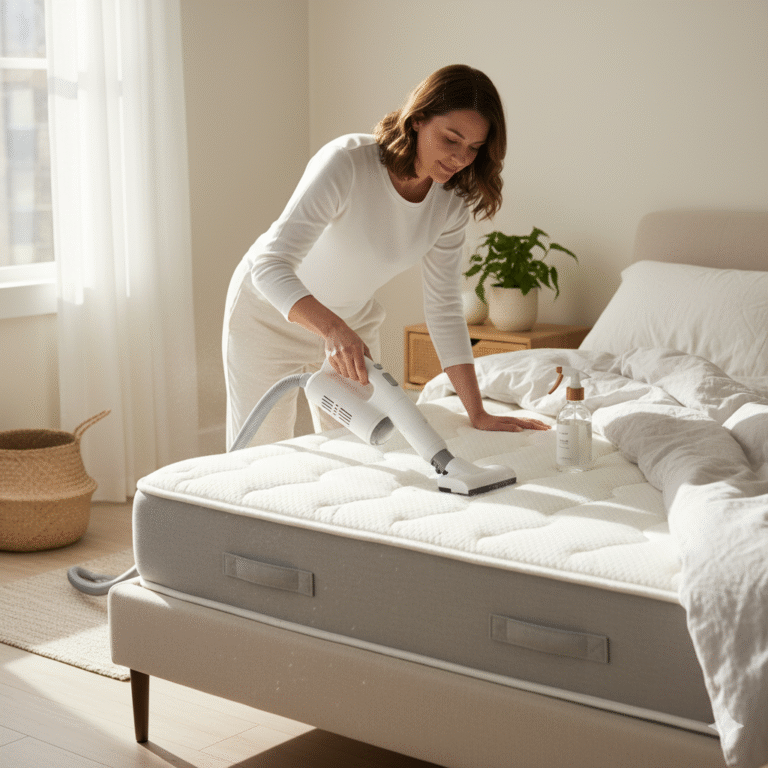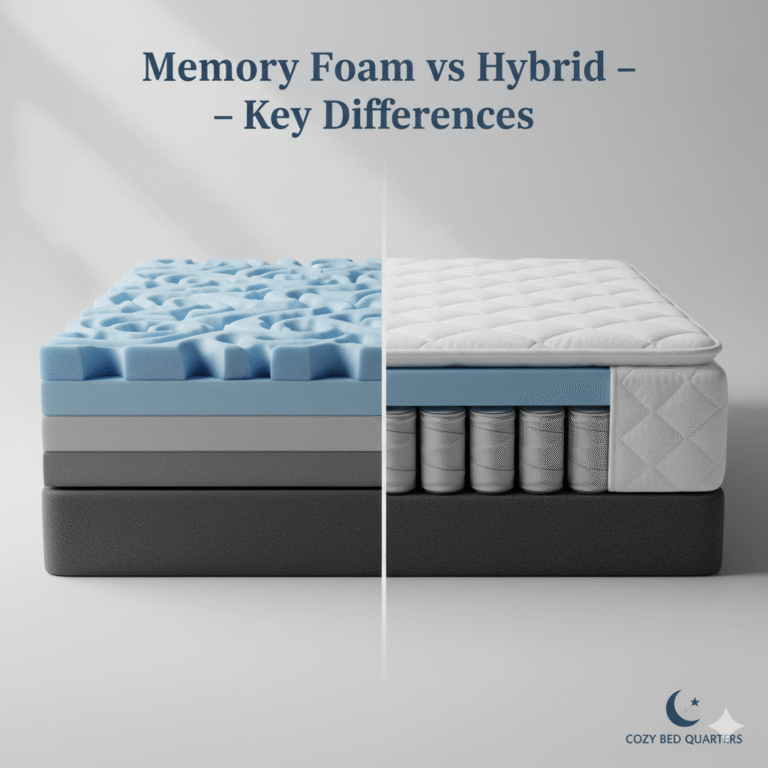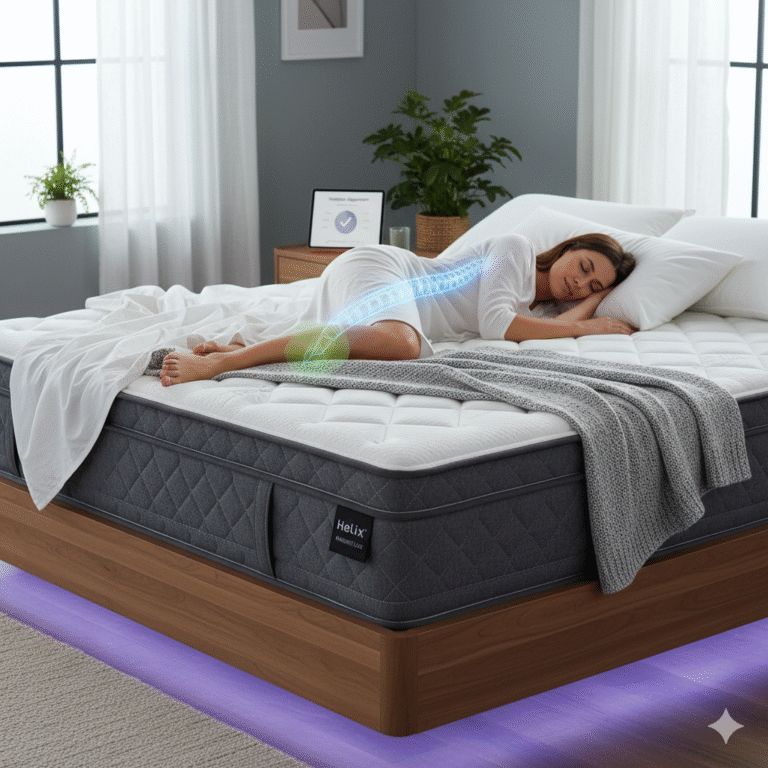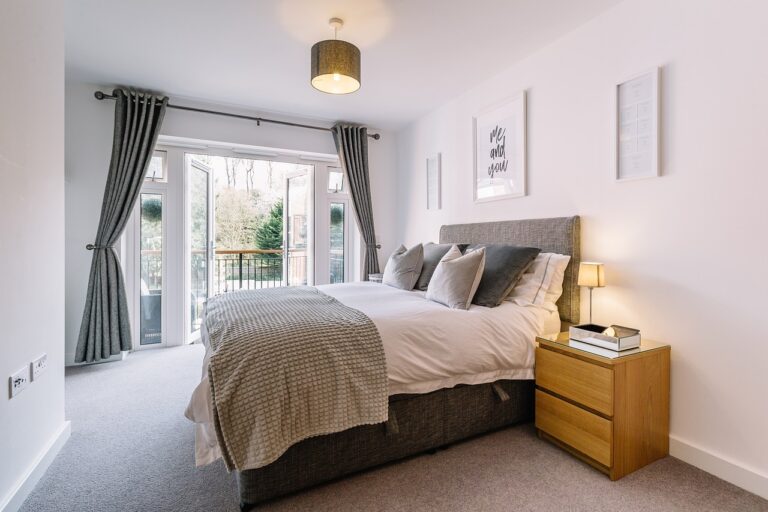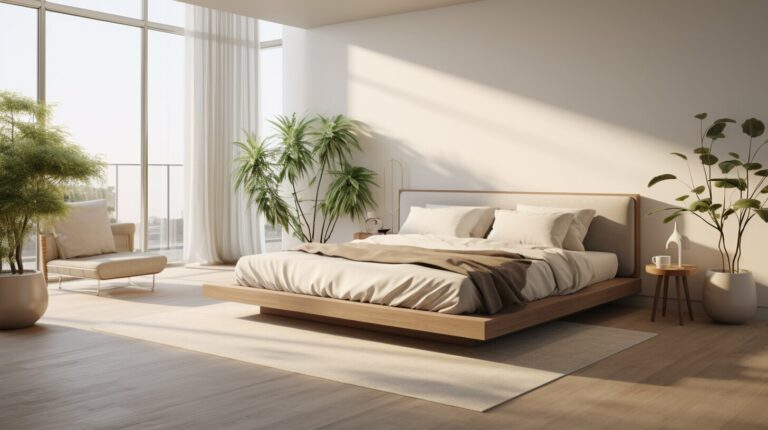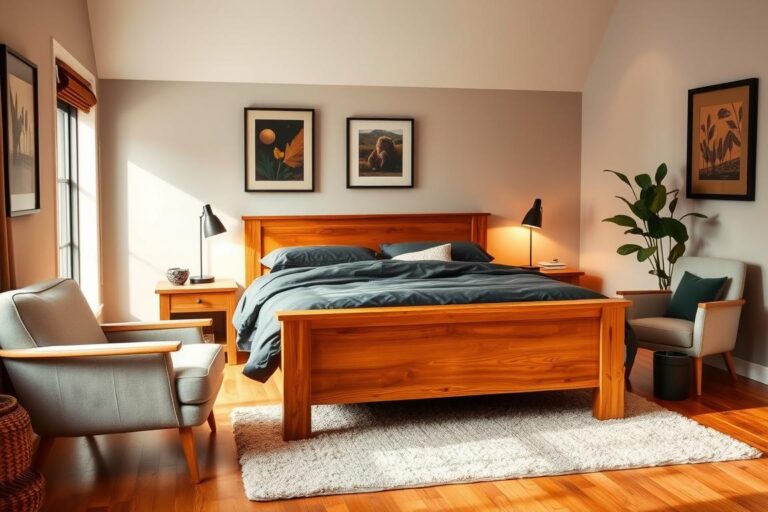Rug Selection Tips: Size, Materials & Style Guide
Short on time? Here are the essential rug selection tips: pick a size that anchors your furniture (8×10+ for bedrooms, 24″ clearance around a dining table), choose durable fibers (wool or polypropylene for traffic, silk/viscose only for low-traffic), match pile height to comfort needs, and always add a rug pad for safety and longevity.
Key Takeaways on Rug Selection Tips
- Size first: large rooms often need 8×10 or 9×12; dining rugs should extend at least 24″ beyond the table.
- Materials matter: wool for durability, polypropylene/polyester for value and stain resistance; reserve silk/viscose for low traffic.
- Pile height = feel: low pile for easy cleaning, high pile for plush comfort.
- Always use a rug pad to prevent slips, protect floors, and extend rug life.
- Design last: coordinate color/pattern with your existing decor so the rug ties the room together.
Choosing the right rug size and material is crucial for achieving the desired look and functionality in a room. Whether you’re furnishing a large living room or a cozy bedroom, these tips will help you make the best decision for your space.
Factors to Consider When Selecting a Rug Size
Start with layout: the right rug size should anchor your main furniture, define the zone, and leave a small border from walls. In living rooms, aim for 8×10 or 9×12 so at least the front legs of seating rest on the rug; in bedrooms, 8×10 or larger gives coverage beyond the bed; in dining rooms, add ~24″ on all sides to clear pulled-out chairs.
For larger rooms, such as living rooms or open-concept spaces, it is recommended to go for a larger rug, such as 8×10 or 9×12, that can encompass the major furniture pieces while leaving a bit of space between the rug and the wall. This creates a defined gathering area and adds a sense of coziness to the room.
In smaller rooms, a 5×8 or 6×9 rug may be sufficient to anchor the furniture and add warmth to the space. This size allows for the front legs of the sofa and chairs to rest on the rug, providing a cohesive look and creating a cozy atmosphere.
When placing a rug in a bedroom, it’s important to consider the scale of the room. An 8×10 or larger rug is ideal as it provides enough coverage under the bed, extending beyond the sides and foot of the bed. This creates a soft and plush surface to step onto when getting in and out of bed, adding a touch of luxury to your morning routine.
| Room | Ideal Rug Size |
|---|---|
| Living Room | 8×10 or 9×12 |
| Bedroom | 8×10 or larger |
| Dining Room | Extend at least 24 inches around all sides of the table |
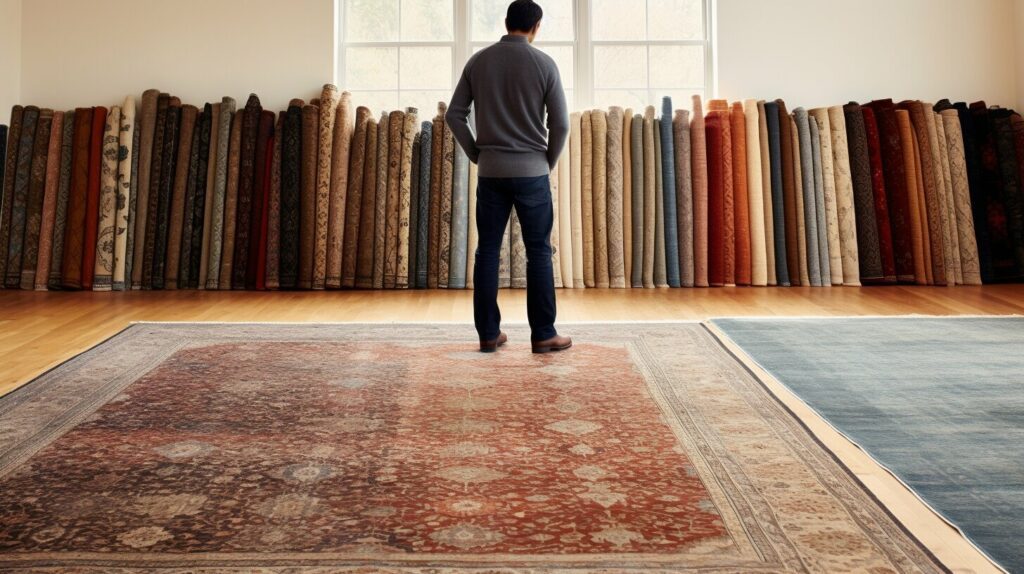
Understanding Rug Materials and Durability
Choose materials by traffic and care: wool balances durability and cleanability, cotton is light and easy, synthetics (polypropylene/polyester/acrylic) maximize stain resistance and value, while silk and viscose are best reserved for low-traffic spaces.
Natural fibers like wool, cotton, silk, jute, and sisal are known for their durability and ability to withstand everyday use. Wool rugs are particularly popular due to their natural resistance to stains, dirt, and fading. Cotton rugs are lightweight and easy to clean. Silk rugs add elegance but need delicate care. Jute and sisal bring texture but require more maintenance.
Synthetic fibers like acrylic, polyester, and polypropylene are excellent choices when you want budget-friendliness and stain resistance. Acrylic can mimic wool; polyester resists stains and fading; polypropylene handles moisture and heavy traffic well.
| Rug Material | Durability | Ease of Maintenance |
|---|---|---|
| Wool | High | Moderate |
| Cotton | Moderate | High |
| Silk | Low | High |
| Acrylic | Moderate | High |
| Polyester | Moderate | High |
| Polypropylene | High | High |
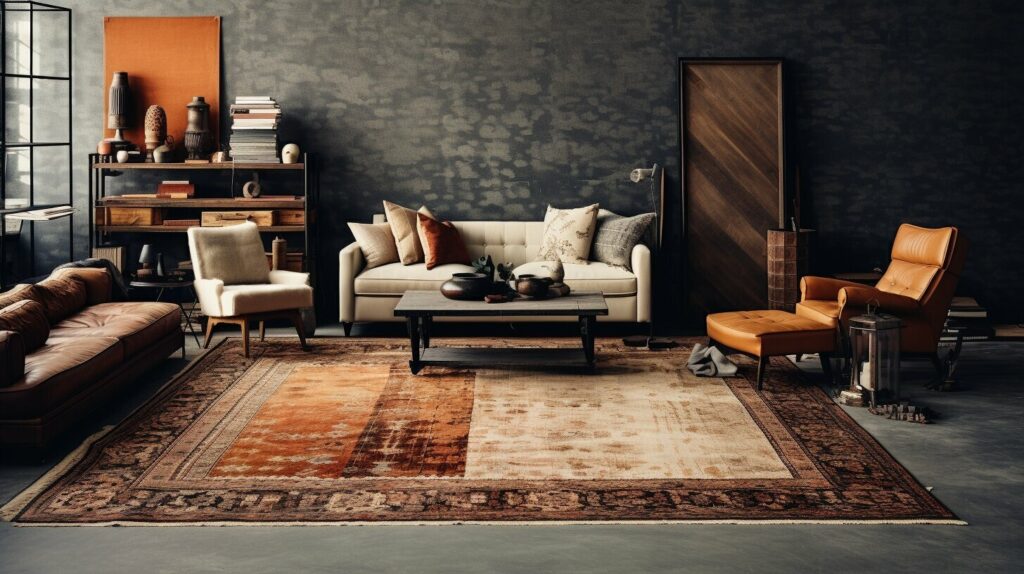
- Consider foot traffic: choose wool or durable synthetics for busy areas.
- Match look and feel: wool = warm/luxurious; synthetics = easy and budget-friendly.
- Account for allergies, kids, and pets; prioritize stain resistance.
- Measure accurately for proper fit.
- Follow care instructions for longevity.
Expert advice: “Choosing the right rug material is crucial in creating a functional and visually appealing space. Consider your lifestyle, budget, and desired aesthetic to make the best choice for your home.” – Jane Doe, Interior Designer
Choosing the Right Rug Material for Your Needs
Match fiber to priorities: pick wool/cotton for natural feel, synthetics for easy care/value, and keep viscose to quiet, low-traffic rooms only.
1. Natural Fibers
Natural fiber rugs—wool, cotton, silk, jute, sisal—offer durability and texture. Wool is long-lasting and stain-resistant; cotton is affordable and easy to wash; silk is luxurious but delicate; jute/sisal add rustic texture with more maintenance.
2. Synthetic Fibers
Acrylic, polyester, and polypropylene maximize stain resistance and affordability. Acrylic mimics wool; polyester is durable and easy to clean; polypropylene withstands heavy traffic and moisture—great for busy homes.
Note: viscose feels silky but is prone to damage—reserve it for low-traffic spaces like bedrooms or formal living rooms.

- Prioritize durability, cleanability, and texture.
- Choose wool or cotton for lasting, stain-resistant performance.
- Pick acrylic, polyester, or polypropylene for value and easy care.
- Avoid viscose in high-traffic areas.
Considering Pile Height for Comfort and Plushness
Pile height controls feel and upkeep: low pile is smoother and easier to clean for high-traffic zones; high pile adds cushioned, cozy comfort for bedrooms and lounge areas.
Pile height refers to the thickness of the fibers used in the construction of the rug. Low pile rugs have shorter fibers, creating a flatter surface and smoother texture. High pile rugs have longer fibers for a deeper, more luxurious feel.
| Rug Pile Height | Comfort Level | Plushness |
|---|---|---|
| Low pile | Less cushioned | Smoother texture |
| High pile | More cushioned | Soft and luxurious texture |
Protecting Your Rug with a Rug Pad
Always add a pad: it prevents slips, cushions steps, protects floors, and prolongs your rug’s life. Size the pad 1–2″ inside the rug’s edges so it stays hidden.
When selecting a rug pad, measure your rug and choose a pad slightly smaller (e.g., for an 8×10 rug, a 7’6″x9’6″ pad). Use felt or rubber on hard floors for grip and cushion; choose a thinner non-slip pad on carpet to prevent bunching.
Benefits of Using a Rug Pad
- Prevents slipping and sliding
- Provides cushioning and comfort
- Protects floors from scratches and damage
- Extends the lifespan of your rug
- Allows for easier vacuuming and cleaning
“A rug pad is like a foundation for your rug. It not only keeps the rug in place, but it also provides added comfort and protection for your floors.” – Interior Design Expert
| Rug Pad Size | Rug Size |
|---|---|
| 4′ x 6′ | 3′ x 5′ |
| 5′ x 8′ | 4′ x 6′ |
| 8′ x 10′ | 7’6″ x 9’6″ |
| 9′ x 12′ | 8′ x 10′ |
Design Considerations for Rug Selection
Let your rug support the room’s story: align color with your palette, balance pattern against existing prints, and choose a style (traditional, modern, minimalist) that complements your furniture and finishes.
When it comes to color, decide whether the rug is a statement or a subtle anchor. Patterns can modernize (geometrics) or soften (florals). If the room already has strong patterns, pick a calmer rug to avoid visual clutter.
Style should track your home’s overall vibe. Traditional rugs add sophistication; contemporary options favor clean lines. Mixing styles can work—just keep a cohesive color story.
Remember, the design of your rug should complement and enhance your existing decor, so take your time to find the perfect rug that will not only tie the room together but also express your personal style.
| Design Considerations | Rug Selection Tips |
|---|---|
| Color | Match the room palette; neutrals are versatile, bold tones add impact. |
| Pattern | Balance with existing prints—use geometrics for modern, florals for soft elegance. |
| Style | Reflect your taste; traditional for detail, contemporary for simplicity. |
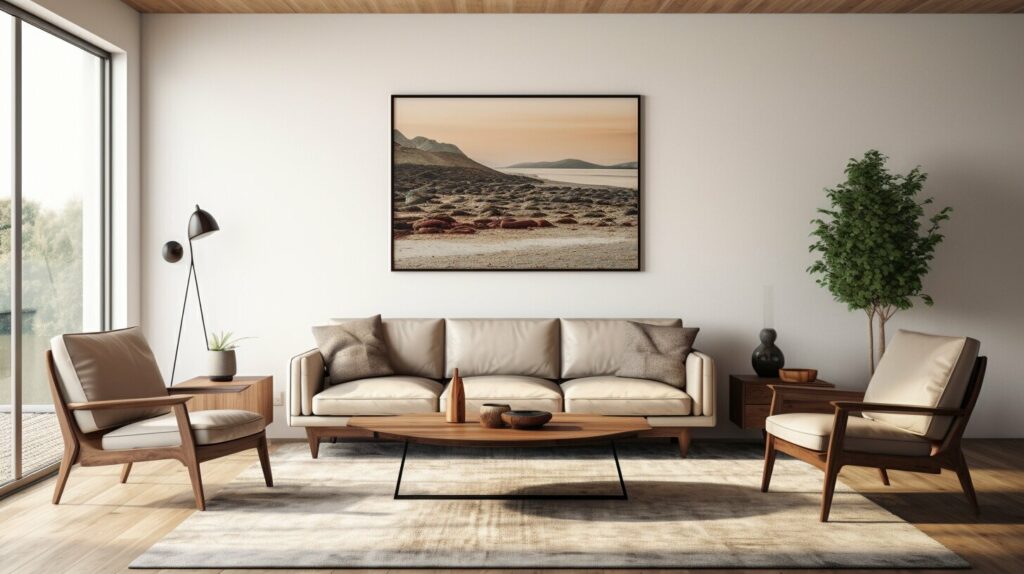
Cleaning and Maintenance Tips for Rugs
Maintenance keeps rugs beautiful: vacuum regularly (both sides when possible), treat spills immediately by blotting, rotate seasonally for even wear, and schedule professional cleaning every 12–24 months based on traffic.
Regular vacuuming is the first step in maintaining cleanliness. Shake out or beat the rug outdoors to remove embedded dirt. For spills, blot—don’t rub—and spot clean with a mild detergent approved for your rug material (always test in an inconspicuous area).
Rotate the rug every six months (or more often in high-traffic areas). Professional cleaning can lift deep soil and refresh fibers—use services that specialize in your rug’s material.
Related Reading from Cozy Bed Quarters
- Velvet Bed Frame Ideas: Add Luxe Texture to Your Bedroom
- Duvet vs. Comforter: Which Is Right for You?
- Blackout Curtains Guide: Sleep Better with Light Control
- How to Layer Area Rugs Like a Designer
- Bedroom Layouts: Space-Savvy Furniture Arrangements
Conclusion
By following these rug selection tips, you can confidently choose the perfect rug that will enhance your home decor and create a welcoming atmosphere. Size your rug to your layout, select materials for traffic and care needs, match pile height to comfort, and anchor everything with a quality rug pad.
FAQ
- How do I choose the right size rug for my room?
- For larger rooms, go 8×10 or 9×12 to encompass major furniture while leaving a bit of wall clearance. In smaller rooms, 5×8 or 6×9 can anchor the space. Bedrooms benefit from 8×10 or larger. Dining rugs should extend at least 24″ around the table to clear pulled-out chairs.
- What are the best rug materials to choose from?
- Natural fibers like wool, cotton, silk, jute, and sisal are durable and easy to clean (wool especially). Synthetics—acrylic, polyester, polypropylene—are affordable and stain-resistant. Reserve viscose for low-traffic areas.
- What is pile height and how does it affect the feel of a rug?
- Pile height is fiber length. Low pile = smoother, easier to clean. High pile = plusher, more cushioned underfoot.
- Why should I use a rug pad?
- Rug pads prevent slips, add cushioning, protect floors, and extend rug life. Size the pad slightly smaller than the rug.
- How do I clean and maintain my rug?
- Vacuum regularly, blot spills promptly, rotate every 6 months, and consider professional cleaning every 12–24 months. Follow your rug’s specific care instructions.
Rug Selection Tips
- Homes & Gardens: www.homesandgardens.com
- Rug Love: www.ruglove.co.uk
- House Beautiful: www.housebeautiful.com
- HGTV: www.hgtv.com
Source Links
- https://www.sarah-montgomery.com/blog/2020/1/2/how-to-choose-the-right-size-and-material-area-rug
- https://stylebyemilyhenderson.com/blog/living-room-rug-size

Related reading from Cozy Bed Quarters
- Bold Bedroom Decor Ideas
- Stylish Nightstands and Bedside Tables Guide
- How to Style and Organize Your Bedside Table
Other reading we found popular

